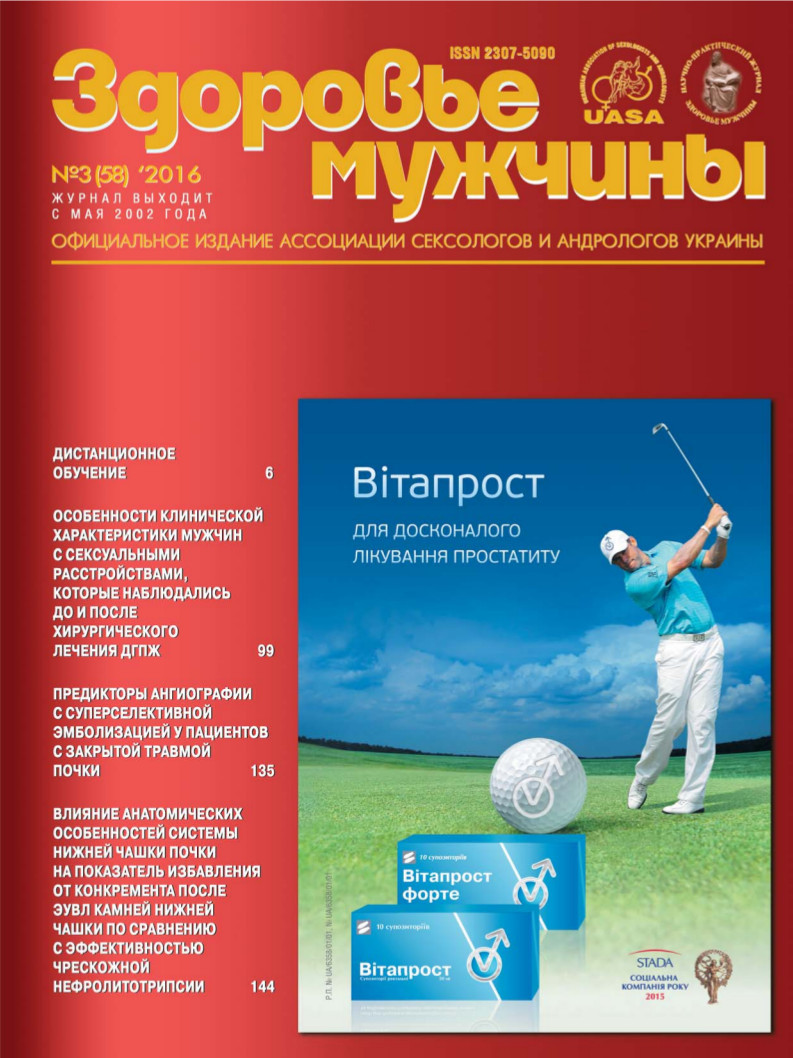Comparative evaluation of clinical effectiveness of different minimally invasive methods of treatment ureterolitiaza
##plugins.themes.bootstrap3.article.main##
Abstract
In recent years increase in incidence and prevalence of urinary stone disease (USD) was noticed in Armenia (increase in incidence 3.8 and in prevalence – 2.5 times). Extracorporeal shock wave lithotripsy (ESWL), contact uretherolithotripsy (including laser-assisted - CLLT ) and percutaneous nephrolithotripsy (PCNL) are “gold standard” treatment for USD with ureteral stones.
The objective: сomparative evaluation of clinical efficacy of ESWL, PCNL and CLLT in patients with large stones (>1cm) in proximal part of ureter.
Patients and methods. One hundred eighty patients with ureterolithiasis who underwent different surgical procedures for stone removal in “Erebouni” Medical Center. Patients were divided into 3 clinical groups: 1st – 60 patients who underwent ESWL, 2nd – 60 patients who underwent PCNL, 3rd – 60 patients who underwent CLLT.
Results. Clinical efficacy of ESWL (“Stone free”) was 93.3%, PCNL – 98.3% and CLLT – 98.3%. Odds ratio of becoming “Stone free” in the 1st group compared to the 2nd group was 0.237 with 95% CI from 0.026 to 2.188, that indicates higher chance of becoming “stone free” in the 2nd and 3rd clinical groups (after PCNL and CLLT) than in the 1st group (after ESWL).
Conclusions. Therefore, there is definite connection between risk factor (type of surgery) and outcome (“stone free”), that is: chance to become “stone free” is higher after PCNL and CLLT than after ESWL.
##plugins.themes.bootstrap3.article.details##

This work is licensed under a Creative Commons Attribution 4.0 International License.
Authors retain the copyright and grant the journal the first publication of original scientific articles under the Creative Commons Attribution 4.0 International License, which allows others to distribute work with acknowledgment of authorship and first publication in this journal.
References
http://www.moh.am/uploadfiles/Book.pdf
Amato M., Lusini M.L, Nelli F. Epidemiology of nephrolithiasis today. Urol Int. 2004;72 Suppl 1:1–5.
Расе К.Т., Weir M.J., Tarig N., Honey J.D. Low success rate of repeat shock wave lithotripsy for ureteral stones after failed initial treatment. J Urol. 2000;164:1905-1907.
Tьrk C., Knoll T., Petrik A., Sarica K., Skolarikos A., Straub M., Seitz C. Guidelines on Urolithiasis. European Association of Urology. 2014: 98.
Van Belle G. Biostatistics: A Methodology For the Health Sciences, 2nd Edition. 2004:896.
Аляев Ю.Г., Руденко В.И., Газимиев М.А. Мочекаменная болезнь. – М.: ГЭОТАР(Медиа, 2006. – 235 с.
Власов В.В. Эпидемиология: учеб. пос. для вузов. – Москва: ГЭОТАР-МЕД, 2004. – 464 с.
Гланц С. Медико-биологическая статистика. пер. с англ., Москва: Практика. – 1999. – 459 с.
Гржибовский А.М. Анализ номинальных данных (независимые наблюдения) // Экология человека. – 2008. – No 6. – С. 58–68. http://cyberleninka.ru/article/n/analiz-nominalnyh-dannyh-nezavisimye-nablyudeniya
Комяков Б.К. Урология/учебник. – М.: ГЭОТАР-Медиа, 2012. – 464 с.
Петри А., Сэбин К. Наглядная статистика в медицине. – Москва: ГЭОТАР-МЕД, 2003. – 144 с.
Торосьянц А.С. Клинико-экономическое обоснование малоинвазивных методов удаления крупных камней мочеточника: автореферат дисс. … канд. мед. наук : 14.01.23 [ГОУВПО
«РГНИМУ им. Н.И. Пирогова». – М., 2012. – 27 с.
Флетчер Р., Флетчер С., Вагнер Э. Клиническая эпидемиология. – Москва: Медиа Сфера, 1998. – 352 с.





